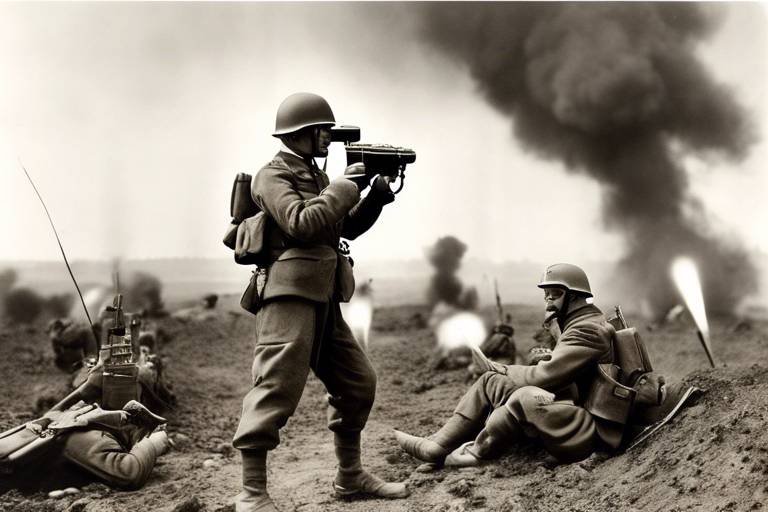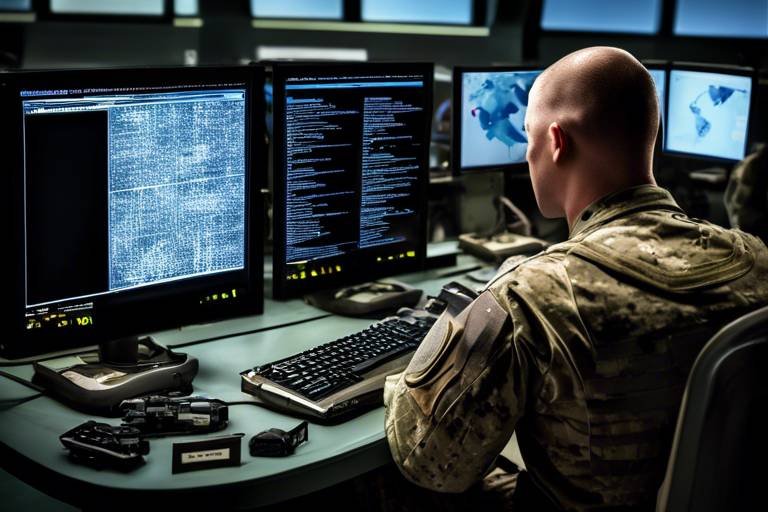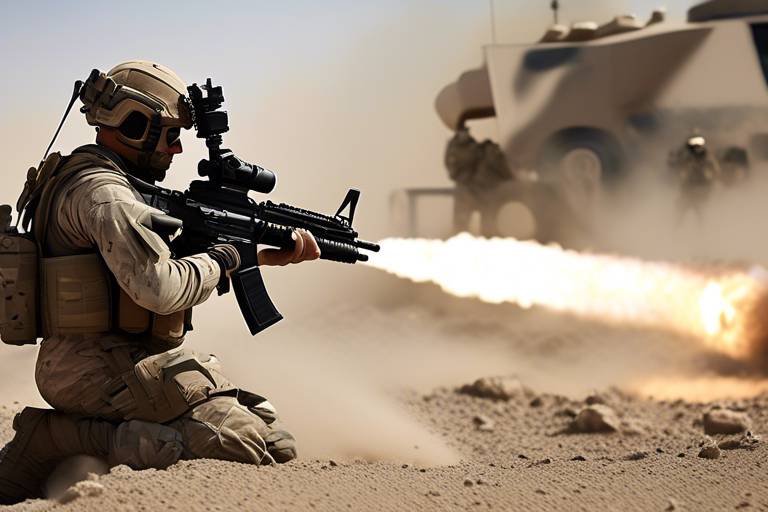The Impact of Digital Twins on Military Systems
In today's rapidly evolving technological landscape, the military sector is experiencing a profound transformation, largely fueled by the integration of advanced technologies such as digital twins. But what exactly are digital twins? Essentially, they are virtual replicas of physical systems, processes, or assets that utilize real-time data to mirror the performance and behavior of their physical counterparts. This innovative approach is not just a passing trend; it is reshaping how military operations are conducted, enhancing efficiency, and improving decision-making processes.
The concept of digital twins is rooted in the idea of creating a dynamic virtual model that reflects the state of a physical object throughout its lifecycle. These models are constructed using a combination of data from sensors, historical information, and predictive analytics. In military applications, this means that every piece of equipment, from fighter jets to ground vehicles, can be monitored in real-time, allowing for better management and operational efficiency.
Imagine being able to predict when a military vehicle might need maintenance before it actually breaks down. This capability not only saves time and resources but also ensures that military personnel are always ready for action. The implications are vast, ranging from enhanced operational readiness to significant cost savings. As we delve deeper into the various applications of digital twins in military systems, it becomes clear that their impact is both profound and multifaceted.
Digital twins serve as a bridge between the physical and digital worlds, enabling military organizations to gain insights that were previously unattainable. By continuously collecting and analyzing data from various sources, these virtual models provide a real-time overview of assets, which is crucial for effective decision-making in high-stakes environments.
In the context of military operations, digital twins facilitate a range of applications, from equipment maintenance to mission planning. They are not just tools for monitoring; they are integral to the strategic planning process, allowing military leaders to simulate various scenarios and outcomes based on real-time data. This leads to more informed decisions and better resource allocation, ultimately enhancing mission success rates.
The applications of digital twins in military operations are as diverse as they are impactful. For instance, in the realm of maintenance and logistics, digital twins optimize resource allocation and predictive maintenance, ensuring that military assets are always in peak condition. This proactive approach to maintenance helps extend the lifespan of equipment and reduces the likelihood of unexpected failures.
In logistics and maintenance, the use of digital twins is revolutionizing how military organizations manage their resources. By employing predictive maintenance techniques, military leaders can anticipate equipment failures before they occur, allowing for timely interventions. This not only minimizes downtime but also significantly reduces operational costs associated with emergency repairs.
Predictive maintenance techniques using digital twins involve analyzing data collected from sensors embedded in military equipment. This data can reveal patterns and trends that indicate when a piece of equipment is likely to fail. By leveraging this information, military organizations can schedule maintenance activities more effectively, ensuring that their assets are always mission-ready.
Effective resource allocation is critical for military success. Digital twins facilitate better decision-making in resource distribution during operations. For example, commanders can use real-time data to assess the status of various assets and allocate resources accordingly, ensuring that the right equipment is available at the right time and place.
Another significant application of digital twins is in the realm of training and simulation. By creating realistic training environments, digital twins allow military personnel to practice their skills in scenarios that closely mimic real-world conditions. This immersive training experience enhances operational preparedness and ensures that soldiers are better equipped to handle the complexities of modern warfare.
The benefits of implementing digital twins in military systems are vast and varied. From improved efficiency to enhanced decision-making capabilities, the integration of this technology is proving to be a game-changer for military organizations worldwide.
Cost efficiency is a primary advantage of digital twins. By optimizing resource management and employing predictive analytics, military organizations can significantly reduce operational costs. This financial benefit is particularly important in an era where budgets are often constrained, and every dollar counts.
Enhanced decision-making is crucial in military contexts. With real-time data at their fingertips, commanders can make informed and timely decisions during operations. This capability not only improves the effectiveness of military strategies but also enhances the overall safety and success rates of missions.
Despite their many advantages, the implementation of digital twins in military applications is not without challenges. Issues such as data security, integration with existing systems, and the need for skilled personnel can hinder the adoption of this transformative technology.
Data security is a significant concern when implementing digital twins. The risks associated with sensitive military data must be carefully managed to prevent unauthorized access and potential breaches. Strategies to mitigate these risks include robust encryption methods and strict access controls.
Integrating digital twins with existing military systems presents its own set of challenges. The complexities involved in ensuring seamless interoperability can be daunting, but it is essential for effective implementation. Military organizations must prioritize the development of compatible systems to fully leverage the benefits of digital twins.
The future of digital twins in military systems holds great promise. As technology continues to advance, we can expect to see even more sophisticated applications and innovations that will further enhance their capabilities. The strategic implications of adopting digital twins are profound, as they have the potential to redefine military operations and improve overall mission success rates.
Technological advancements will continue to shape the evolution of digital twins. Future innovations may include enhanced data analytics, machine learning algorithms, and improved simulation technologies, all of which will contribute to more effective military strategies.
The strategic implications of adopting digital twins are profound. By enhancing readiness and improving decision-making processes, digital twins can significantly impact military operations, ultimately leading to more successful missions and a stronger defense posture.
- What are digital twins? Digital twins are virtual replicas of physical systems that use real-time data to mirror the performance and behavior of their physical counterparts.
- How do digital twins benefit military operations? They enhance operational efficiency, improve decision-making, and reduce costs through predictive maintenance and resource optimization.
- What challenges do digital twins face in military applications? Challenges include data security concerns, integration with existing systems, and the need for skilled personnel.
- What is the future of digital twins in the military? The future holds promise for further advancements and integration into military strategies, enhancing readiness and operational success.

[Understanding Digital Twins]
Digital twins are not just a buzzword in the tech world; they represent a revolutionary leap in how we can manage and optimize complex systems, particularly in military applications. So, what exactly are digital twins? In simple terms, a digital twin is a virtual replica of a physical object or system. This means that every aspect of the physical counterpart is mirrored in the digital realm, allowing for real-time monitoring and analysis. Imagine having a life-sized, interactive model of a military aircraft that reflects its current state, performance data, and even environmental conditions—this is the essence of a digital twin.
At their core, digital twins consist of several key components that work together to create a comprehensive model. These include:
- Data Acquisition: Sensors and IoT devices collect data from the physical asset.
- Data Processing: This data is then processed and analyzed to create insights.
- Visualization: The processed data is visualized in a user-friendly format, often through dashboards or 3D models.
- Feedback Loop: Insights from the digital twin can be fed back into the physical system for optimization.
The functionality of digital twins as real-time data mirrors is particularly crucial for military operations. They allow commanders and technicians to monitor equipment health, predict failures before they occur, and make informed decisions based on accurate data. For instance, if a tank's engine is showing signs of wear, the digital twin can alert maintenance crews before a breakdown happens, ensuring that the vehicle remains operational when it’s needed most. This level of foresight is invaluable in military contexts where every second counts and operational efficiency can mean the difference between success and failure.
Moreover, the integration of digital twins into military systems not only enhances operational efficiency but also supports strategic planning. By simulating various scenarios in a virtual environment, military leaders can anticipate challenges and devise effective strategies without the risks associated with real-world trials. This capability transforms how military operations are planned and executed, ensuring that troops are better prepared for any situation.
In summary, understanding digital twins involves recognizing their role as sophisticated tools that bridge the gap between the physical and digital worlds. They provide a dynamic platform for monitoring, analysis, and decision-making, making them indispensable in modern military operations. As we delve deeper into their applications and benefits, it becomes clear that digital twins are set to play a pivotal role in shaping the future of military strategy.

[Applications in Military Operations]
When it comes to military operations, the integration of digital twins is nothing short of revolutionary. These virtual replicas are not just fancy tech toys; they are powerful tools that enhance various facets of military strategy and execution. Imagine having a real-time, digital counterpart of a tank or a fighter jet that not only mirrors its physical attributes but also continuously updates with data from its sensors. This is the essence of digital twins in military applications, and their versatility is astounding.
One of the most significant applications of digital twins is in equipment maintenance. With the military's reliance on complex machinery and technology, the stakes are incredibly high. Digital twins allow for predictive maintenance, where the system can forecast when a piece of equipment is likely to fail based on real-time data. This proactive approach means that instead of waiting for something to break down, maintenance can be scheduled in advance, saving both time and resources. For instance, if a digital twin of an aircraft indicates that a particular component is wearing out faster than expected, maintenance crews can address this issue before it leads to a costly and dangerous failure.
Moreover, logistical operations within the military benefit immensely from digital twins. They provide a comprehensive overview of resource allocation, ensuring that every asset is accounted for and utilized efficiently. By simulating different scenarios, military planners can visualize how resources should be distributed in various operational contexts. This capability is particularly crucial in high-stakes environments where every second counts. Imagine a scenario where troops are deployed to a conflict zone; having a digital twin that can model troop movements and resource needs in real-time can make a significant difference in operational success.
In the realm of maintenance and logistics, digital twins stand out as game-changers. They not only optimize resource allocation but also enhance the overall readiness of military equipment. By creating a digital replica of an entire fleet of vehicles or aircraft, military leaders can monitor the health of each unit and make informed decisions about repairs and replacements. This not only prolongs the lifespan of equipment but also ensures that soldiers have reliable tools at their disposal when they need them the most.
Delving deeper into predictive maintenance techniques, these systems utilize advanced algorithms and machine learning to analyze data collected from various sensors. This data-driven approach allows for the identification of patterns that might indicate future failures. For example, if a digital twin of a military vehicle detects unusual vibrations or temperature spikes, it can alert maintenance teams to investigate further. This proactive stance not only minimizes downtime but also significantly reduces costs associated with emergency repairs and replacements.
When it comes to resource allocation strategies, the impact of digital twins cannot be overstated. They facilitate better decision-making by providing a holistic view of available assets and their current status. Military commanders can utilize this information to deploy resources more effectively during operations. For instance, if a digital twin indicates that certain supplies are running low in a specific area, commanders can redirect resources from less critical areas to ensure that troops have what they need to succeed. This level of agility is essential in modern warfare, where conditions can change in the blink of an eye.
In conclusion, the applications of digital twins in military operations are vast and varied. From enhancing maintenance protocols to optimizing resource allocation, they are reshaping how military organizations operate. The ability to simulate real-world scenarios and make data-driven decisions not only improves operational efficiency but also enhances the overall effectiveness of military strategies.
- What are digital twins in military operations?
Digital twins are virtual replicas of physical military assets that provide real-time data and insights to enhance operational efficiency and decision-making. - How do digital twins improve maintenance?
They enable predictive maintenance by analyzing data to forecast equipment failures, allowing for timely repairs and minimizing downtime. - Can digital twins help in logistics?
Yes, they optimize resource allocation and provide a comprehensive overview of available assets, improving decision-making during operations. - What challenges do digital twins face?
Challenges include data security concerns, integration with existing systems, and the need for skilled personnel to manage these technologies.
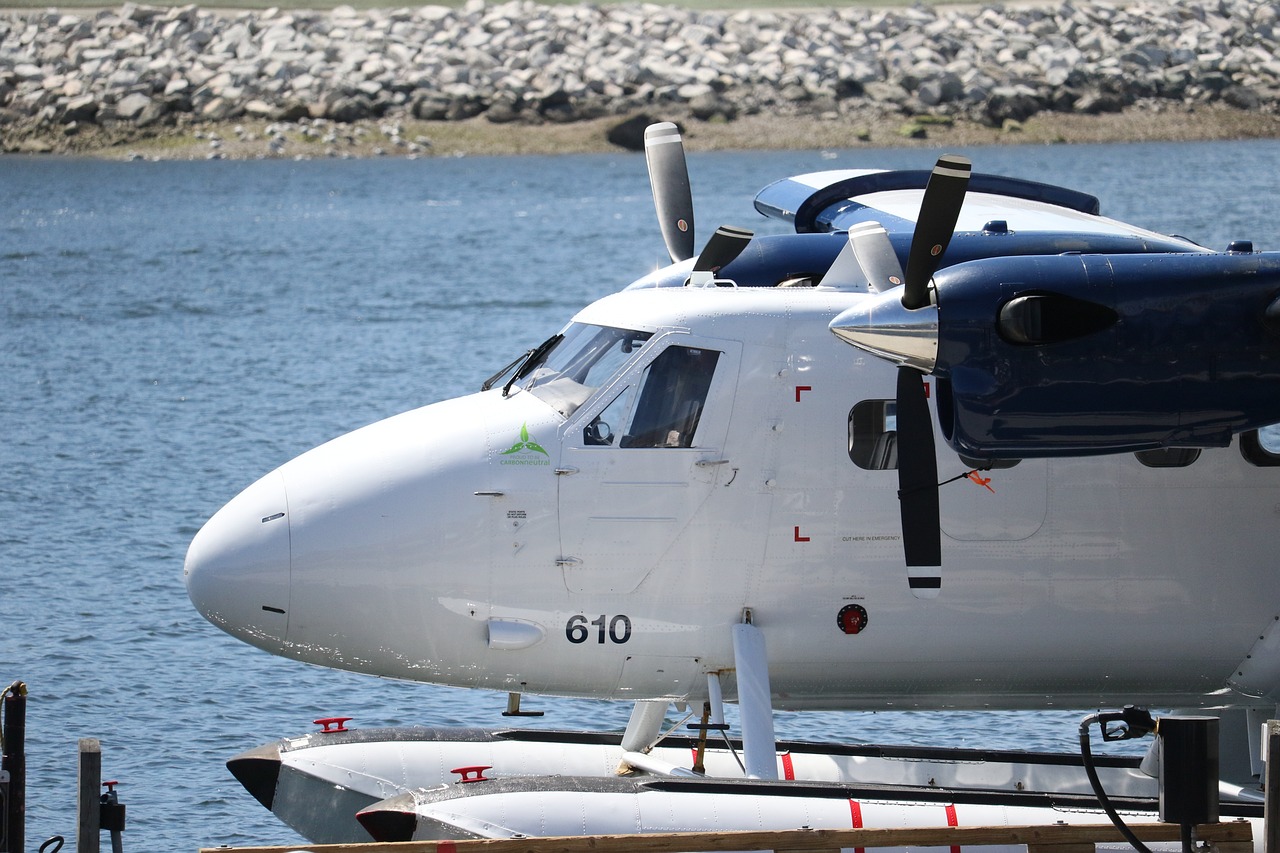
[Maintenance and Logistics]
In the realm of military operations, maintenance and logistics are the backbone of success. Without effective maintenance, even the most advanced military equipment can falter at critical moments. This is where digital twins come into play, acting as virtual counterparts to physical assets. They provide a comprehensive view of an asset's health and performance, enabling military forces to optimize their maintenance protocols and logistics strategies. Imagine having a digital version of a tank that mirrors its real-world counterpart, reflecting every wear and tear, every operational hour, and every maintenance check. This is the essence of digital twins.
One of the most significant advantages of using digital twins in maintenance and logistics is the ability to implement predictive maintenance. This approach allows military personnel to anticipate potential equipment failures before they occur. By analyzing real-time data from the digital twin, commanders can identify patterns and trends that may indicate an impending malfunction. For instance, if the digital twin of a helicopter shows increased vibrations or temperature fluctuations, maintenance teams can be alerted to investigate and rectify the issue before it leads to a costly failure in the field. This proactive stance not only enhances the readiness of military assets but also extends their lifespan, ensuring that they remain operational when they are needed the most.
Moreover, digital twins facilitate resource allocation in logistics. Military operations often involve complex supply chains and resource management challenges. By employing digital twins, military leaders can visualize and simulate various logistical scenarios. This capability enables them to make informed decisions regarding the distribution of resources, ensuring that troops have the necessary supplies and equipment at their disposal. For example, if a particular unit is running low on ammunition, the digital twin can help identify the fastest route for resupply, factoring in current weather conditions, enemy positions, and vehicle availability. This level of detail is invaluable in high-stakes situations where every second counts.
To illustrate the impact of digital twins on maintenance and logistics, consider the following table that outlines key benefits:
| Benefit | Description |
|---|---|
| Predictive Maintenance | Anticipates equipment failures, reducing downtime and maintenance costs. |
| Resource Optimization | Enhances decision-making for resource distribution, improving operational efficiency. |
| Increased Readiness | Ensures military assets are operational when needed, enhancing mission success. |
In conclusion, the integration of digital twins into maintenance and logistics represents a significant leap forward for military operations. By harnessing the power of real-time data and predictive analytics, military forces can enhance their operational capabilities, reduce costs, and ultimately save lives. As technology continues to evolve, the role of digital twins in military logistics and maintenance will undoubtedly expand, paving the way for smarter, more efficient operations.
Frequently Asked Questions:
- What are digital twins? Digital twins are virtual replicas of physical systems, providing real-time data and insights into their performance and health.
- How do digital twins enhance maintenance? They enable predictive maintenance by analyzing data to anticipate equipment failures, thereby reducing downtime.
- What role do digital twins play in logistics? Digital twins help optimize resource allocation, ensuring that military units receive necessary supplies and equipment efficiently.
- Are there any challenges in implementing digital twins? Yes, challenges include data security concerns, integration with existing systems, and the need for skilled personnel.

[Predictive Maintenance Techniques]
Predictive maintenance techniques utilizing digital twins represent a significant leap forward in how military organizations manage their equipment and assets. By creating a virtual replica of physical systems, military leaders can monitor the health and performance of their equipment in real-time. This proactive approach is akin to having a crystal ball that not only reveals potential issues before they escalate but also provides insights into the optimal times for maintenance. Imagine being able to foresee a mechanical failure before it happens, allowing for timely interventions that can save both time and money.
At the core of predictive maintenance are advanced data analytics and machine learning algorithms that analyze historical data and current performance metrics. These algorithms can identify patterns and anomalies, enabling military personnel to predict when a piece of equipment is likely to fail. For instance, if a helicopter's engine shows signs of overheating during routine operations, the digital twin can alert maintenance teams to investigate further, potentially preventing a catastrophic failure in the field. This not only enhances the safety of personnel but also ensures that critical missions are not compromised due to equipment failure.
Moreover, predictive maintenance techniques can be categorized into several methodologies, each offering unique advantages. Some of the most notable techniques include:
- Condition-Based Monitoring: This technique involves continuously monitoring equipment conditions using sensors that provide real-time data. This allows for immediate detection of any irregularities.
- Statistical Analysis: By applying statistical methods to historical maintenance data, military organizations can establish predictive models that forecast future failures based on past trends.
- Machine Learning: Advanced algorithms can learn from vast amounts of operational data, improving their predictive accuracy over time and adapting to new patterns of equipment usage.
These methodologies not only enhance the reliability of military assets but also contribute to significant cost savings. The ability to perform maintenance only when necessary—rather than on a fixed schedule—reduces unnecessary downtime and extends the lifespan of equipment. Furthermore, the integration of predictive maintenance with digital twins allows for more informed decision-making regarding resource allocation. Commanders can prioritize maintenance efforts based on the criticality of equipment and its operational role, ensuring that the most vital assets are always mission-ready.
In conclusion, predictive maintenance techniques facilitated by digital twins are transforming the landscape of military operations. By leveraging real-time data and advanced analytics, military organizations can enhance their operational readiness, reduce costs, and ultimately improve mission success rates. As technology continues to evolve, the potential for these techniques to further revolutionize military maintenance practices is immense, paving the way for a future where equipment failures are not just anticipated but effectively managed before they occur.
- What are digital twins? Digital twins are virtual replicas of physical systems that use real-time data to mirror their performance and condition.
- How does predictive maintenance work? Predictive maintenance uses data analytics and machine learning to forecast equipment failures, allowing for timely maintenance interventions.
- What are the benefits of predictive maintenance in the military? Benefits include enhanced equipment reliability, reduced operational costs, improved safety, and better resource allocation.
- What challenges do digital twins face in military applications? Challenges include data security concerns, integration with existing systems, and the need for skilled personnel to manage these technologies.

[Resource Allocation Strategies]
Effective resource allocation is the backbone of military success, ensuring that every asset is utilized to its fullest potential. In the context of digital twins, this strategy becomes even more potent. By creating a virtual representation of military assets, commanders can visualize and analyze the distribution of resources in real-time. This capability allows for a more dynamic approach to resource management, where adjustments can be made on the fly based on current operational needs.
Imagine a battlefield scenario where every piece of equipment, personnel, and logistical support is represented as a digital twin. Commanders can see which units are overextended, which are underutilized, and where reinforcements are needed most. This level of insight transforms traditional resource allocation methods, which often rely on historical data and static plans, into a fluid, responsive strategy that adapts to changing conditions.
One of the critical aspects of leveraging digital twins for resource allocation is the ability to conduct what-if analyses. By simulating various scenarios, military planners can assess the impact of different resource distribution strategies before deploying them in real life. For instance, they can evaluate the outcomes of reallocating drones from surveillance to reconnaissance missions in response to emerging threats. This proactive planning not only enhances operational efficiency but also minimizes the risks associated with misallocation.
Moreover, digital twins facilitate enhanced communication among different military branches. When all units operate from the same digital framework, information silos are broken down, leading to improved collaboration. For example, if the air force needs to adjust its flight patterns due to changes in ground troop movements, this can be communicated and visualized instantaneously within the digital twin environment. As a result, resource allocation becomes a coordinated effort rather than a series of independent decisions.
To illustrate the impact of digital twins on resource allocation, consider the following table that outlines some key benefits:
| Benefit | Description |
|---|---|
| Real-Time Insights | Access to up-to-date information enhances decision-making processes. |
| Proactive Planning | What-if scenarios allow for better preparation and response strategies. |
| Enhanced Collaboration | Improved communication among units leads to coordinated efforts. |
| Cost Reduction | Efficient resource management lowers operational costs. |
In conclusion, the integration of digital twins into resource allocation strategies not only optimizes the deployment of military assets but also fosters a culture of adaptability and foresight. As military operations become increasingly complex, the ability to leverage real-time data and predictive analytics through digital twins will be paramount in ensuring mission success.
- What are digital twins? Digital twins are virtual replicas of physical systems, used to simulate and analyze the performance of military assets in real-time.
- How do digital twins improve resource allocation? They provide real-time insights and enable proactive planning, allowing military leaders to make informed decisions about resource distribution.
- Can digital twins be integrated with existing military systems? Yes, but it requires careful planning to ensure interoperability and seamless data exchange between systems.
- What are the future prospects for digital twins in the military? The future holds great promise for further integration and advancements in technology, enhancing their capabilities and applications in defense strategies.

[Training and Simulation]
In the ever-evolving landscape of military operations, training and simulation play a pivotal role in preparing personnel for real-world challenges. Digital twins have emerged as a game-changer in this domain, offering a unique opportunity to create highly realistic training environments that mirror actual operational conditions. Imagine a virtual world where soldiers can practice maneuvers, test strategies, and hone their skills without the risks associated with live exercises. This is the essence of digital twins in military training.
Digital twins utilize real-time data from physical assets to construct virtual replicas that reflect not just the equipment but also the environmental conditions and operational scenarios soldiers might face. This technology allows for dynamic simulations where variables can be adjusted on the fly, enabling trainers to challenge soldiers with various scenarios, from combat situations to logistics management. The flexibility of digital twins means that training can be tailored to the specific needs of the unit, ensuring that every soldier receives the most relevant and effective preparation.
Moreover, the integration of digital twins into training programs facilitates the analysis of performance metrics. By tracking how soldiers react in simulated environments, commanders can identify strengths and weaknesses, allowing for targeted improvements. For instance, after a training session, data collected from the digital twin can be analyzed to determine how well soldiers performed under different conditions, leading to actionable insights that can refine future training exercises.
Another significant advantage of using digital twins in military training is the ability to conduct what-if scenarios. Trainers can simulate various operational challenges, such as equipment failures or unexpected enemy movements, without any real-world consequences. This not only enhances the soldiers' problem-solving skills but also boosts their confidence in handling unpredictable situations. The result is a more prepared and resilient force, capable of adapting to the complexities of modern warfare.
To further illustrate the impact of digital twins on military training, consider the following table that outlines key benefits:
| Benefit | Description |
|---|---|
| Realistic Scenarios | Creates training environments that closely mimic real-world conditions. |
| Performance Analysis | Enables detailed tracking of soldier performance for targeted improvements. |
| Adaptability | Allows for modification of scenarios in real-time based on training needs. |
| Cost-Effective | Reduces the need for expensive live training exercises while maintaining effectiveness. |
In conclusion, the integration of digital twins into military training and simulation not only enhances the readiness of soldiers but also revolutionizes the way they prepare for missions. With the ability to simulate complex scenarios and analyze performance in real-time, military organizations can ensure that their personnel are not just trained but are truly prepared for the challenges ahead.
- What are digital twins? Digital twins are virtual replicas of physical systems that use real-time data to simulate and analyze performance.
- How do digital twins enhance military training? They create realistic training environments, allow for performance analysis, and enable adaptability in training scenarios.
- Can digital twins be used for all types of military training? Yes, they can be tailored to various training needs, including combat, logistics, and equipment handling.
- What are the cost benefits of using digital twins? They reduce the need for expensive live training exercises while providing effective training solutions.

[Benefits of Digital Twins]
The implementation of digital twins in military systems brings a myriad of benefits that significantly enhance operational efficiency and effectiveness. These virtual replicas of physical assets not only replicate real-world conditions but also provide insights that can lead to smarter decision-making. One of the most notable advantages is the ability to improve efficiency. By utilizing real-time data, military leaders can monitor equipment performance and operational parameters continuously, allowing for immediate adjustments and optimizations. This dynamic capability means that resources are used more wisely, reducing waste and increasing overall mission effectiveness.
Another major benefit is cost savings. Military operations are often constrained by tight budgets, and digital twins can help alleviate some of this pressure. By predicting maintenance needs and identifying potential failures before they occur, military organizations can avoid costly repairs and downtime. For instance, the use of predictive maintenance techniques can lead to a significant reduction in operational costs. According to recent studies, organizations that have adopted these technologies have seen maintenance costs drop by as much as 30% to 50%. This is achieved through better resource management and the ability to schedule maintenance during non-critical times.
Furthermore, digital twins enhance decision-making capabilities. In high-stakes military environments, timely and informed decisions can mean the difference between success and failure. By providing commanders with real-time data and simulations, digital twins enable them to evaluate various scenarios and outcomes quickly. This capability is akin to having a strategic war room at their fingertips, where different strategies can be tested and assessed without the risks associated with real-world implementations. The ability to visualize data and simulate different operational scenarios provides a powerful tool for military leaders.
To illustrate the impact of digital twins on decision-making, consider the following table that summarizes key benefits:
| Benefit | Description |
|---|---|
| Improved Efficiency | Real-time monitoring allows for immediate adjustments, optimizing resource use. |
| Cost Savings | Predictive maintenance reduces repair costs and downtime significantly. |
| Enhanced Decision-Making | Real-time data supports quick evaluations of strategies and scenarios. |
In addition to these benefits, digital twins facilitate better collaboration among military units. By providing a common platform for data sharing and analysis, they enable different branches of the military to work together more effectively. This collaborative approach ensures that everyone is on the same page, leading to more cohesive strategies and operations.
Moreover, the integration of digital twins can also enhance training and preparedness. By creating realistic simulations of combat scenarios, military personnel can train in environments that closely mimic real-life situations. This not only boosts confidence but also ensures that soldiers are better prepared for actual missions. The ability to practice with digital twins can lead to improved response times and decision-making skills in the field.
In conclusion, the benefits of implementing digital twins in military systems are profound and far-reaching. From improving efficiency and reducing costs to enhancing decision-making and fostering collaboration, the advantages are clear. As technology continues to evolve, the potential for digital twins to revolutionize military operations becomes even more promising.
- What are digital twins?
Digital twins are virtual representations of physical systems that use real-time data to simulate and predict performance. - How do digital twins improve military operations?
They enhance operational efficiency, reduce costs through predictive maintenance, and support better decision-making. - What challenges do digital twins face in military applications?
Challenges include data security concerns, integration with existing systems, and the need for skilled personnel to manage the technology.

[Cost Efficiency]
In today's military landscape, cost efficiency is not just a buzzword; it's a necessity. With budgets tightening and the demand for advanced technology rising, military organizations are constantly seeking ways to stretch their dollars further. This is where digital twins come into play. By creating virtual replicas of physical systems, these innovative tools allow military leaders to optimize their resources and reduce operational costs significantly.
One of the primary ways digital twins contribute to cost efficiency is through predictive analytics. Imagine being able to foresee equipment failures before they happen! With digital twins, military units can monitor the health of their assets in real-time, analyzing data to predict when maintenance is required. This proactive approach not only minimizes downtime but also extends the lifespan of costly equipment. For instance, rather than waiting for a vehicle to break down in the field, commanders can schedule maintenance during non-critical times, saving both time and money.
Moreover, digital twins facilitate better resource management. By simulating various scenarios, military planners can evaluate the effectiveness of different strategies without the need for expensive live exercises. This leads to a more informed allocation of funds and resources, ensuring that every dollar spent contributes to mission success. For example, a military unit can assess the logistical implications of deploying a new piece of equipment before it’s even in the field, allowing them to identify potential issues and mitigate costs upfront.
Furthermore, the integration of digital twins into military operations can lead to significant savings in training costs. Traditional training programs often require extensive resources, from fuel for vehicles to personnel costs. However, with digital twins, soldiers can engage in realistic simulations that mimic real-world environments without the associated costs of physical training. This not only enhances their skills but also allows military organizations to allocate their budgets more effectively.
To illustrate the impact of digital twins on cost efficiency, consider the following table:
| Cost Area | Traditional Approach | With Digital Twins | Cost Savings |
|---|---|---|---|
| Equipment Maintenance | Reactive maintenance leading to higher downtime | Predictive maintenance reducing unexpected failures | 30% reduction in maintenance costs |
| Training | Live exercises requiring extensive resources | Virtual simulations reducing resource needs | 40% reduction in training expenses |
| Logistics Planning | Trial and error in resource allocation | Data-driven decisions improving efficiency | 25% increase in resource utilization |
In summary, the integration of digital twins into military operations is a game-changer when it comes to cost efficiency. By leveraging real-time data and predictive analytics, military organizations can not only save money but also enhance their operational readiness. As the military continues to embrace these technologies, the potential for further cost savings and efficiencies will likely expand, paving the way for a more sustainable and effective defense strategy.
- What are digital twins? Digital twins are virtual replicas of physical systems that use real-time data to simulate and analyze performance.
- How do digital twins improve cost efficiency in the military? They enable predictive maintenance, optimize resource allocation, and reduce training costs through realistic simulations.
- What are some challenges in implementing digital twins? Challenges include data security concerns, integration with existing systems, and the need for skilled personnel.
- What is the future of digital twins in military systems? The future holds promise for advancements in technology and deeper integration into military strategies, enhancing operational capabilities.

[Enhanced Decision-Making]
In the high-stakes world of military operations, the ability to make informed decisions quickly can mean the difference between mission success and failure. This is where digital twins come into play, acting as powerful tools that provide real-time data and insights. Imagine having a crystal ball that not only shows you the current state of your assets but also predicts their future performance. That's precisely what digital twins offer to military commanders.
By creating a virtual replica of physical systems, digital twins allow military leaders to visualize and analyze various scenarios before making crucial decisions. They harness the power of data analytics and machine learning to provide actionable insights. For instance, when a commander is faced with a tactical decision, they can utilize the data from digital twins to assess the potential outcomes of different strategies. This capability leads to more effective planning and execution of operations.
Moreover, the integration of real-time data from various sources—such as sensors on vehicles, drones, and even soldiers—enables commanders to gain a comprehensive understanding of the battlefield dynamics. This holistic view is invaluable, especially in rapidly changing environments where every second counts. With digital twins, military leaders can simulate various scenarios, evaluate potential risks, and determine the best course of action based on current conditions.
Consider a scenario where a military unit is preparing for a mission in a hostile environment. By leveraging digital twins, commanders can:
- Analyze the terrain and weather conditions.
- Assess the readiness and status of their equipment.
- Evaluate the capabilities and locations of enemy forces.
This data-driven approach allows for better strategic planning, ensuring that every decision is backed by solid evidence rather than gut feelings. As a result, the military can respond more effectively to unforeseen challenges, adapting strategies on the fly to maintain the upper hand.
Furthermore, the predictive capabilities of digital twins enhance decision-making by highlighting potential issues before they escalate. For example, if a digital twin indicates that a piece of equipment is likely to fail soon, commanders can proactively schedule maintenance or allocate resources to mitigate the risk. This foresight not only saves time and money but also ensures that military operations remain seamless and efficient.
In conclusion, the integration of digital twins into military systems revolutionizes decision-making processes. By providing real-time insights and predictive analytics, these technologies empower military leaders to make informed choices that enhance operational effectiveness. As we move forward, the continued evolution of digital twins will undoubtedly play a pivotal role in shaping the future of military strategy and execution.
- What are digital twins? Digital twins are virtual replicas of physical systems that use real-time data to simulate and analyze their performance.
- How do digital twins improve decision-making in the military? They provide commanders with real-time insights and predictive analytics, enabling them to make informed decisions based on current conditions and potential outcomes.
- What are some applications of digital twins in military operations? Digital twins are used in equipment maintenance, mission planning, and training simulations, among other applications.
- What challenges do digital twins face in military contexts? Challenges include data security concerns, integration with existing systems, and the need for skilled personnel to manage and analyze the data.

[Challenges and Limitations]
While the integration of digital twins in military systems offers numerous advantages, it's crucial to acknowledge the challenges and limitations that accompany this transformative technology. First and foremost, one of the most pressing issues is data security. Military operations rely heavily on sensitive information, and the use of digital twins raises concerns about the potential for data breaches. The interconnectedness of systems means that a vulnerability in one area could expose a wealth of classified information, making it imperative for military organizations to implement robust cybersecurity measures.
Moreover, the integration of digital twins with existing military systems presents its own set of challenges. Many military organizations operate with legacy systems that were not designed with interoperability in mind. This can lead to significant integration issues, where data silos prevent the seamless exchange of information. For digital twins to be effective, they must communicate effortlessly with other systems, which often requires substantial updates or even complete overhauls of existing infrastructure.
Additionally, the successful implementation of digital twins necessitates a workforce equipped with the right skills. The demand for personnel who are proficient in data analytics, machine learning, and system integration is on the rise. Unfortunately, there is currently a shortage of skilled professionals in these areas within the military context. This gap can hinder the effective deployment and utilization of digital twins, limiting their potential benefits.
In summary, while digital twins hold great promise for enhancing military operations, the hurdles of data security, integration challenges, and the need for skilled personnel must be addressed. Overcoming these obstacles is essential for realizing the full potential of digital twins in the defense sector.
- What are digital twins?
Digital twins are virtual replicas of physical systems that provide real-time data mirrors for assets and operations, allowing for enhanced monitoring and decision-making.
- How do digital twins improve military operations?
They enhance operational efficiency, predictive maintenance, and resource allocation, ultimately leading to better decision-making and cost savings.
- What are the main challenges of implementing digital twins?
Key challenges include data security concerns, integration with existing systems, and the need for skilled personnel to manage and analyze the data.
- Can digital twins be integrated with legacy systems?
While it is possible, integration can be complex and may require significant updates to existing infrastructure to ensure seamless communication.

[Data Security Concerns]
In the realm of military operations, the integration of digital twins brings forth a plethora of advantages, but it also introduces significant data security concerns that cannot be overlooked. As these virtual replicas operate in real-time, they require constant access to sensitive information regarding military assets, operational strategies, and personnel data. This raises the question: how can we ensure that this critical information remains protected against potential cyber threats?
One of the primary concerns revolves around the risk of data breaches. Cybercriminals are always on the lookout for vulnerabilities, and with the increasing sophistication of their techniques, military systems are prime targets. If a digital twin is compromised, it could provide hackers with insights into military operations, potentially leading to catastrophic consequences. For instance, imagine if an adversary gained access to real-time data about troop movements or equipment status; such information could be exploited to thwart military strategies.
To mitigate these risks, military organizations must adopt a multi-layered security approach. This could include:
- Encryption: All data transmitted between physical assets and their digital counterparts should be encrypted to prevent unauthorized access.
- Access Controls: Implementing strict access controls ensures that only authorized personnel can interact with digital twins.
- Regular Security Audits: Conducting frequent security assessments can help identify vulnerabilities before they are exploited.
Furthermore, the integration of artificial intelligence (AI) and machine learning (ML) can enhance security protocols. These technologies can analyze patterns in data access and usage, allowing for the detection of anomalies that may indicate a security breach. By leveraging AI and ML, military systems can become more resilient, adapting to new threats as they emerge.
Another critical aspect of data security is the need for training personnel on best practices for managing sensitive information. Even the most advanced security measures can falter if personnel are not adequately trained to recognize potential threats. Regular training sessions can empower military staff to understand the importance of data security and the specific measures they must take to uphold it.
In conclusion, while digital twins offer transformative potential for military systems, the associated data security concerns present significant challenges. By implementing robust security measures, leveraging advanced technologies, and prioritizing personnel training, military organizations can safeguard their critical information and ensure that the benefits of digital twins are realized without compromising security.
- What are digital twins?
Digital twins are virtual replicas of physical systems that use real-time data to mirror the performance and behavior of their physical counterparts. - How do digital twins enhance military operations?
They improve operational efficiency, facilitate predictive maintenance, and support advanced training simulations, leading to better decision-making and resource allocation. - What are the main data security concerns with digital twins?
Key concerns include the risk of data breaches, unauthorized access to sensitive information, and the need for robust security protocols to protect against cyber threats. - How can military organizations protect their data?
By implementing encryption, access controls, regular security audits, and training personnel on data security best practices.
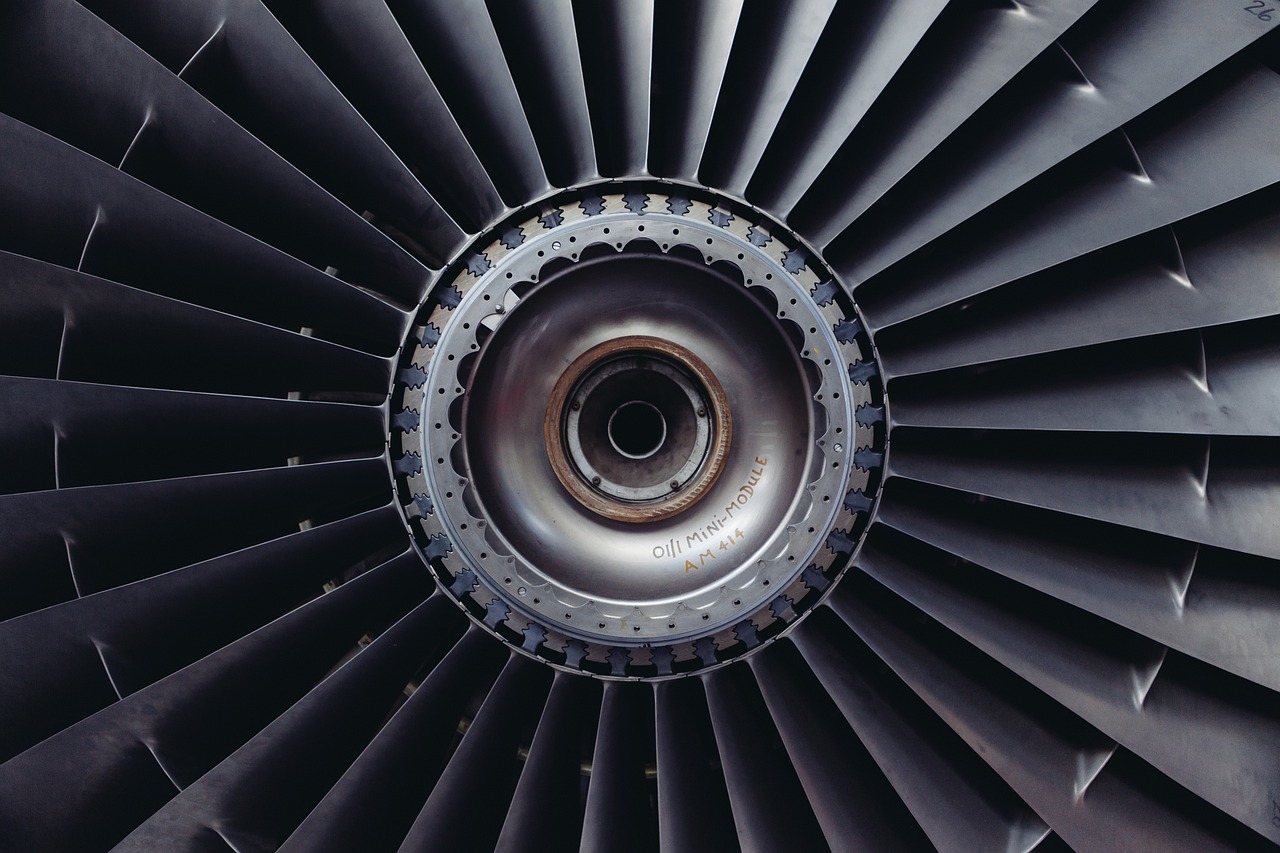
[Integration with Existing Systems]
Integrating digital twins with existing military systems is a complex yet crucial endeavor. The military landscape is characterized by a multitude of legacy systems, each with its own unique architecture and operational protocols. This diversity poses significant challenges when attempting to implement digital twins, which are designed to provide real-time data insights and enhance operational efficiency. The first hurdle is ensuring that these virtual replicas can seamlessly communicate with older systems that may not be equipped with modern data-sharing capabilities.
To effectively integrate digital twins, military organizations must consider several key factors:
- Interoperability: Achieving interoperability between digital twins and existing systems is paramount. This involves creating standardized protocols that allow different systems to exchange data smoothly.
- Data Standardization: Variations in data formats can hinder effective communication. Establishing common data standards is essential for ensuring that the information generated by digital twins is compatible with existing military systems.
- Training Personnel: Skilled personnel are needed to manage the integration process. This means investing in training programs that equip staff with the knowledge to operate both legacy systems and new digital twin technologies.
Moreover, the integration process often requires a phased approach. Instead of a complete overhaul of existing systems, military organizations might opt for pilot programs that allow them to test the functionality of digital twins in controlled environments. This strategy not only minimizes risks but also provides valuable insights into the potential benefits of full-scale implementation.
Another aspect to consider is the cultural shift within military organizations. Embracing digital twins means adapting to a data-driven decision-making culture. This transition can be met with resistance, particularly from personnel accustomed to traditional methods. Therefore, fostering an environment that values innovation and the benefits of real-time data analytics is crucial for successful integration.
In conclusion, while the integration of digital twins with existing military systems presents challenges, it is a necessary step towards enhancing operational capabilities. By focusing on interoperability, data standardization, and personnel training, military organizations can pave the way for a more efficient and responsive operational framework.
- What are digital twins? Digital twins are virtual replicas of physical systems that use real-time data to mirror the performance and conditions of their physical counterparts.
- How do digital twins improve military operations? They enhance operational efficiency, support predictive maintenance, and provide real-time insights for better decision-making.
- What challenges do digital twins face in military integration? Challenges include interoperability with legacy systems, data security concerns, and the need for skilled personnel to manage the technology.
- What is the future of digital twins in the military? The future holds promising advancements in technology that could further enhance the capabilities of digital twins, leading to improved military strategies and readiness.

[Future Prospects]
The future of digital twins in military systems is not just a fleeting trend; it’s a significant evolution that promises to reshape how armed forces operate. As technology advances at a breakneck speed, the integration of digital twins is expected to become more sophisticated, leading to a plethora of opportunities for enhancement in military strategies. Imagine a battlefield where commanders can visualize real-time data from every piece of equipment, every soldier, and every tactic. This is the future that digital twins are paving the way for, and it’s as exciting as it sounds.
One of the key areas where we can expect remarkable technological advancements is in the realm of artificial intelligence (AI) and machine learning. These technologies will allow digital twins to not only mirror physical systems but also predict outcomes based on various scenarios. For example, a digital twin of a military vehicle could analyze past performance data and environmental conditions to forecast potential failures before they occur. This level of foresight can significantly enhance operational efficiency and mission success rates.
Furthermore, the integration of Internet of Things (IoT) devices into military operations will create an interconnected ecosystem where digital twins can thrive. With every piece of equipment connected and feeding data into a central system, the accuracy and reliability of digital twins will improve exponentially. This means that commanders can make informed decisions based on live data, rather than relying on outdated information. The potential for real-time adjustments in strategy based on the insights derived from digital twins could redefine how military operations are conducted.
In addition to these advancements, the strategic implications of adopting digital twins are profound. They can enhance military readiness by providing a comprehensive view of resources, personnel, and logistics. Imagine conducting a mission where every variable is accounted for, and every possible outcome is simulated before deployment. This level of preparedness could lead to higher mission success rates and lower casualty risks. Moreover, as military forces face increasingly complex challenges, the adaptability provided by digital twins will be crucial in maintaining operational superiority.
However, it’s important to note that with great power comes great responsibility. As digital twins become more integrated into military systems, the need for robust data security measures will become even more critical. Protecting sensitive military data from cyber threats will be paramount to ensure that the advantages offered by digital twins are not undermined. The military must invest in advanced cybersecurity protocols to safeguard this invaluable information.
In summary, the future prospects of digital twins in military systems are bright and full of potential. With ongoing technological advancements and a focus on strategic integration, digital twins are set to revolutionize how military operations are conducted. As we look ahead, it’s clear that embracing this technology will be essential for maintaining a competitive edge in defense strategies.
- What are digital twins?
Digital twins are virtual replicas of physical systems that use real-time data to simulate, predict, and optimize the performance of their physical counterparts.
- How do digital twins enhance military operations?
They provide real-time data insights, improve predictive maintenance, and facilitate better decision-making, leading to increased operational efficiency.
- What are the challenges of implementing digital twins in military systems?
Challenges include data security concerns, integration with existing systems, and the need for skilled personnel to manage these technologies.
- What is the future of digital twins in the military?
The future includes advancements in AI, IoT integration, and enhanced strategic capabilities, which will revolutionize military operations and readiness.

[Technological Advancements]
The landscape of military technology is evolving at an unprecedented pace, and digital twins are at the forefront of this revolution. As we delve into the realm of technological advancements, it's essential to recognize how these innovations are not just enhancing the capabilities of digital twins but are also redefining the way military operations are conducted. Imagine a world where every piece of equipment, from tanks to drones, has a digital counterpart that mirrors its real-time status and performance. This is not a futuristic dream; it’s happening now!
One of the most exciting advancements in digital twin technology is the integration of artificial intelligence (AI). AI algorithms can analyze vast amounts of data generated by these digital twins, allowing military personnel to gain insights that were previously unimaginable. For instance, AI can predict potential failures in military equipment before they occur, enabling proactive maintenance and reducing the likelihood of equipment downtime during critical missions. This capability is akin to having a seasoned mechanic who can foresee issues before they arise, ensuring that every piece of equipment is battle-ready.
Moreover, advancements in Internet of Things (IoT) technology have played a significant role in the evolution of digital twins. By connecting various military assets through IoT devices, real-time data can be collected and transmitted seamlessly. This connectivity not only enhances situational awareness but also allows for more coordinated responses during operations. For example, during a military exercise, commanders can receive live updates from multiple assets, creating a comprehensive picture of the battlefield. This level of connectivity is crucial for making informed decisions swiftly.
Another remarkable advancement is the development of augmented reality (AR) and virtual reality (VR) technologies, which are being integrated with digital twins for training purposes. Imagine soldiers donning VR headsets that provide them with a simulated environment where they can interact with digital twins of their equipment. This immersive training experience allows them to practice in a risk-free environment, enhancing their skills and preparedness for real-world scenarios. It’s like playing a video game, but with real stakes and consequences, making training more engaging and effective.
Furthermore, the fusion of big data analytics with digital twins enables military leaders to make strategic decisions based on comprehensive data analysis. By leveraging vast datasets from various sources, including battlefield reports and historical data, commanders can develop more effective strategies. This predictive capability is akin to having a chess master who can foresee multiple moves ahead, allowing military operations to be executed with precision and foresight.
As we look to the future, the potential for blockchain technology to enhance the security and integrity of data within digital twins is becoming increasingly relevant. With the military relying heavily on sensitive data, ensuring that this information remains secure from cyber threats is paramount. Blockchain can provide a decentralized and tamper-proof method of storing and sharing data, ensuring that all parties have access to the most reliable information. This is similar to having a vault that not only protects valuable assets but also allows for transparent transactions among trusted parties.
In summary, the advancements in technology surrounding digital twins are not just enhancing their functionality; they are transforming military operations as a whole. From AI and IoT to AR/VR and blockchain, these innovations are paving the way for a new era of military efficiency and effectiveness. The future looks bright, and as these technologies continue to evolve, we can only imagine the profound impact they will have on defense strategies worldwide.
- What are digital twins?
Digital twins are virtual replicas of physical systems that provide real-time data and analytics to enhance operational efficiency. - How do digital twins improve military training?
Digital twins create realistic training environments using AR and VR technologies, allowing soldiers to practice in a risk-free setting. - What role does AI play in digital twins?
AI enhances digital twins by analyzing data to predict equipment failures and optimize maintenance schedules. - Can digital twins be integrated with existing military systems?
Yes, but it requires careful planning to ensure seamless interoperability and efficient data sharing. - What are the security concerns associated with digital twins?
Data security is a significant concern, and technologies like blockchain can help mitigate risks related to sensitive military data.

[Strategic Implications]
When we talk about the strategic implications of adopting digital twins in military systems, it's like opening a treasure chest of opportunities. Imagine having a powerful ally that not only enhances your readiness but also transforms the way you approach military operations. Digital twins are not just fancy tech; they are game-changers that can redefine how militaries plan, execute, and assess their strategies.
One of the most significant implications is the ability to enhance operational readiness. With real-time simulations and predictive analytics, military commanders can foresee potential challenges and adjust their strategies accordingly. This means that rather than reacting to situations as they arise, military forces can proactively prepare for various scenarios, making them more agile and responsive. Think of it as having a crystal ball that helps you navigate the complexities of warfare.
Furthermore, digital twins facilitate better resource management. In military operations, resources are often limited and must be allocated efficiently. Digital twins provide a comprehensive view of resource availability, usage, and needs. For instance, during a large-scale operation, commanders can utilize digital twins to visualize troop movements, equipment status, and supply chain logistics in one cohesive platform. This level of insight allows for optimized decision-making and minimizes wastage, ultimately contributing to mission success.
Additionally, the integration of digital twins can foster collaboration across different military branches. When all branches of the military operate from a unified digital twin framework, it creates a shared understanding of the battlefield. This collaboration is crucial for joint operations, where air, land, and sea forces must work in harmony. By leveraging a centralized digital twin, communication barriers can be reduced, and strategic alignment can be achieved, leading to a more cohesive and effective military force.
However, it’s essential to recognize that the implementation of digital twins also brings strategic risks. As these systems become more integral to military operations, they may also become targets for cyber attacks. Protecting sensitive data and ensuring the security of digital twin systems is paramount. Military leaders will need to invest in robust cybersecurity measures to safeguard their digital assets and maintain operational integrity.
In conclusion, the strategic implications of digital twins in military systems are profound and multifaceted. They not only enhance operational efficiency and readiness but also redefine how military operations are conducted. As we move forward, the potential for digital twins to revolutionize military strategies is immense, paving the way for a new era of defense capabilities that are smarter, faster, and more effective.
- What are digital twins? Digital twins are virtual replicas of physical systems that use real-time data to mirror the performance and status of military assets and operations.
- How do digital twins improve military operations? They enhance operational readiness, improve resource management, and facilitate collaboration among different military branches.
- What are the risks associated with digital twins? The main risks include data security concerns and the potential for cyber attacks targeting these systems.
- Can digital twins be integrated with existing military systems? Yes, but it requires careful planning and execution to ensure seamless interoperability.
- What is the future of digital twins in military applications? The future looks promising, with advancements in technology likely to enhance their capabilities and applications in defense strategies.
Frequently Asked Questions
- What are digital twins in military systems?
Digital twins are virtual replicas of physical systems, allowing military organizations to simulate, monitor, and analyze real-time data from their equipment and operations. Think of them as a high-tech mirror reflecting the current state of military assets, enabling better decision-making and operational efficiency.
- How do digital twins enhance military operations?
Digital twins enhance military operations by providing insights into equipment performance, optimizing maintenance schedules, and facilitating realistic training simulations. By using these virtual models, military personnel can anticipate issues before they arise, making operations smoother and more effective.
- What are the benefits of using digital twins?
The benefits of digital twins include improved efficiency, significant cost savings, and enhanced decision-making capabilities. They allow for predictive maintenance, which reduces downtime, and better resource allocation, ensuring that every asset is used to its fullest potential.
- What challenges do digital twins face in military applications?
Despite their advantages, digital twins encounter challenges such as data security concerns, integration with existing systems, and the need for skilled personnel to manage these technologies. Addressing these issues is crucial for successful implementation in military contexts.
- How does data security impact the use of digital twins?
Data security is a major concern when implementing digital twins, especially in military settings where sensitive information is involved. Risks include potential breaches and unauthorized access, so robust security measures and protocols must be established to protect critical data.
- What does the future hold for digital twins in military systems?
The future of digital twins in military systems is promising, with advancements in technology expected to enhance their capabilities. As these technologies evolve, they could redefine military strategies, improve readiness, and increase mission success rates significantly.





